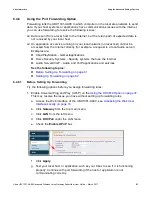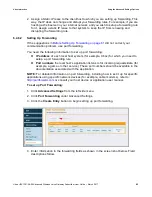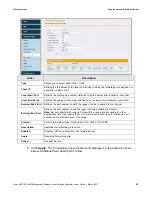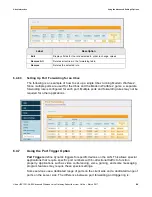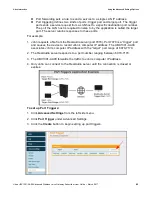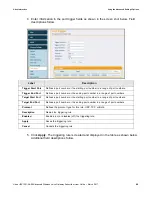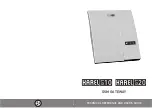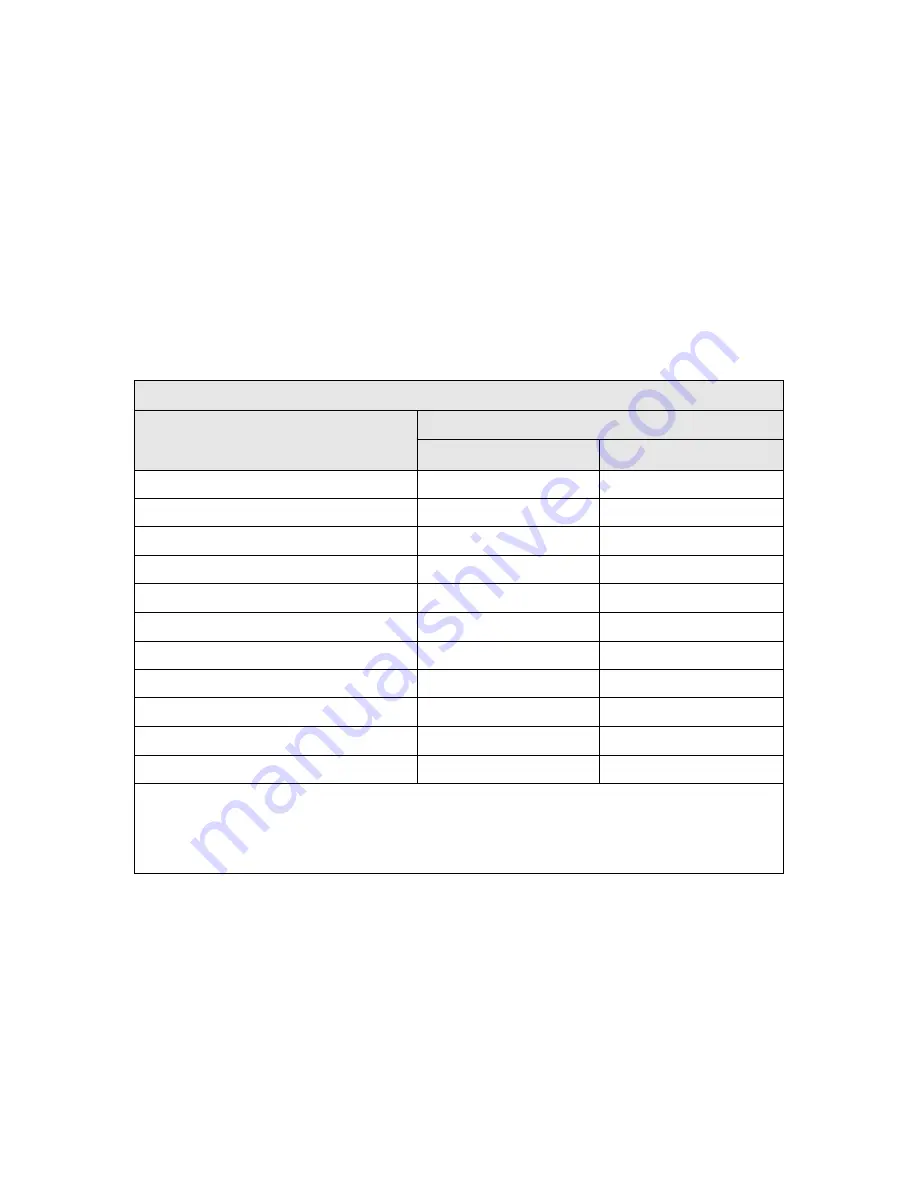
Ubee Interactive
Using the WLAN Option
Ubee UBC1301-AA00 Advanced Wireless Voice Gateway Subscriber User Guide • March 2017
51
1. Connect a wireless client to the wireless UBC1301-AA00. Refer to
if needed.
2. Place the wireless client at around one meter (three feet) away from the UBC1301-
AA00.
3. Obtain the
RSSI
value for the connected client. This value is used in the formula
further below.
4. Use the following table to determine what materials the wireless signal must travel
through to reach the desired wireless coverage distance.
5. Use the following table to determine what materials the wireless signal must travel
through to reach the desired wireless coverage distance.
6. Use the attenuation value from the materials table above in the following formula:
Formula:
(Transmit Power,
use -30dBm
)
–
(Receiver Sensitivity,
use RSSI value
)
=
Allowable Free Space Loss
Allowable Free Space Loss
÷
Materials Attenuation Value
=
Optimal Distance in Feet Between the UBC1301-AA00 and a Wireless Client
Attenuation Considerations
Material
Attenuation
2.4GHZ
5GHz
Free Space
0.24dB / foot
0.3dB / foot
Interior Drywall
3dB to 4dB
3dB to 5dB
Cubicle Wall
2dB to 5dB
4dB to 9dB
Wood Door (Hollow/Solid)
3dB to 4dB
6dB to 7dB
Brick, Concrete Wall (Note 1)
6dB to 18dB
10dB to 30dB
Glass Window (not tinted)
2dB to 3dB
6dB to 8dB
Double Pane Coated Glass
13dB
20dB
Bullet Proof Glass
10dB
20dB
Steel / Fire Exit Door
13dB to 19dB
25dB to 32dB
Human Body
3dB
6dB
Trees (Note 2)
0.15dB / foot
0.3dB / foot
Note 1
: Different types of concrete materials are used in different parts of the world and the thickness
and coating differ depending on whether it is used in floors, interior walls, or exterior walls.
Note 2
: The attenuation caused by trees varies significantly depending upon the shape and thickness
of the foliage.

























